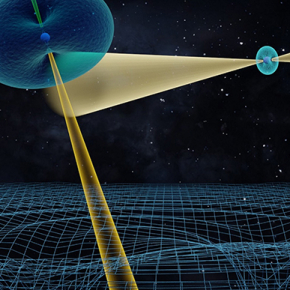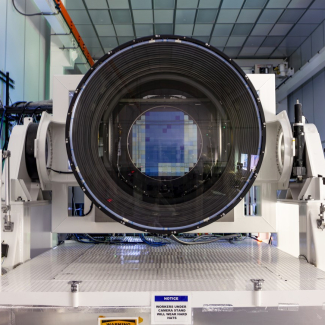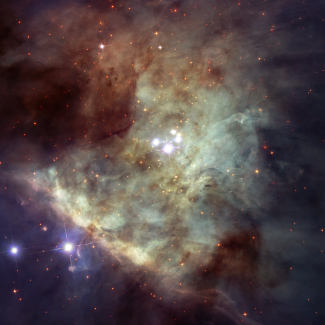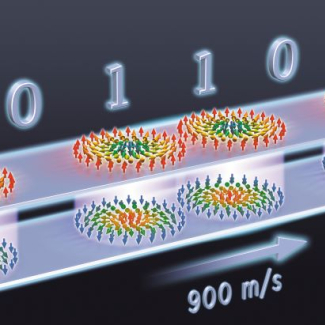
Einstein wins in the end (once again)
|
An international team involving researchers from the CNRS, the University of Orléans, and Observatoire de Paris-PSL1 has conducted a 16-year experiment subjecting the theory of general relativity to the most rigorous series of tests ever conducted. Seven radio telescopes studied a unique pair of late-stage stars (pulsars), revealing new relativistic effects predicted by the theory that had never before been observed. These observations, which agree with Einstein’s theory with an accuracy better than 99.99%, were published in Physical Review X on 13 December 2021.
- 1Working at the Laboratoire de physique et chimie de l'environnement et de l'espace (CNRS/CNES/ Université d’Orléans), Nançay Radio Astronomy Station (Observatoire de Paris-PSL CNRS/Université d’Orléans) and Laboratoire Univers et théories (Observatoire de Paris-PSL/CNRS).
Over 100 years after Albert Einstein presented his theory of gravity, scientists across the globe are continuing their efforts to find flaws in general relativity. Any deviation from its predictions could be the sign of a new physics combining theories that describe the infinitely small (quantum world) as well as the infinitely large.
To this end, an international team led by the Max Planck Institute for Radio Astronomy (Bonn, Germany) studied a unique system consisting of two pulsars that orbit one another: highly compact, rapidly-rotating stars in the final stages of the stellar life cycle that are magnetized,2 and produce beams of radio waves that sweep across the sky like a lighthouse. These characteristics make this system an ideal laboratory for testing general relativity. The system was discovered in 2003, and was observed for 16 years by seven radio telescopes. The Nançay decimetric radio telescope (Cher, France), which is managed by the Observatoire de Paris-PSL, the CNRS, and the University of Orléans, recorded the radio pulses emitted by one of the pulsars for one-hour periods two or three times per week, over the course of a decade.
The data gathered (approximately one million precisely-timed radio pulses in total) enabled scientists to detect numerous relativistic effects, as well as to measure seven parameters of the theory of general relativity, some in unprecedented fashion. For example, the strong gravitational field of each rapidly-moving pulsar curves spacetime around it, thereby deflecting the trajectory of the radio waves emitted by the other pulsar. Not only do telescopes detect the delay in the signal compared to when it propagates in a straight line, but the tiny angle of this deviation (0.04 degrees) was measured for the first time.
The team also tested a cornerstone of Einstein’s theory, the emission of gravitational waves (tiny oscillations in spacetime), with a precision 1,000 times greater than direct detection using gravitational-wave detectors3 . They also observed a consequence of the famous equation E = mc²—namely that the pulsar’s radiation is accompanied by a loss of mass—in addition to the dilation of time, which passes more slowly in the presence of a strong gravitational field.
All of these observations are in perfect agreement with Einstein’s theory. If it does indeed have flaws, even more rigorous tests will be needed to identify them.
To find out more:
Press release by the Max Planck Institute for Radio Astronomy: www.mpifr-bonn.mpg.de/pressreleases/2021/12
The Nançay Radio Astronomy Station website: www.obs-nancay.fr
A photo report on the Nançay Radio Astronomy Station is available in the CNRS Images library: images.cnrs.fr/reportage-photo/rep000628
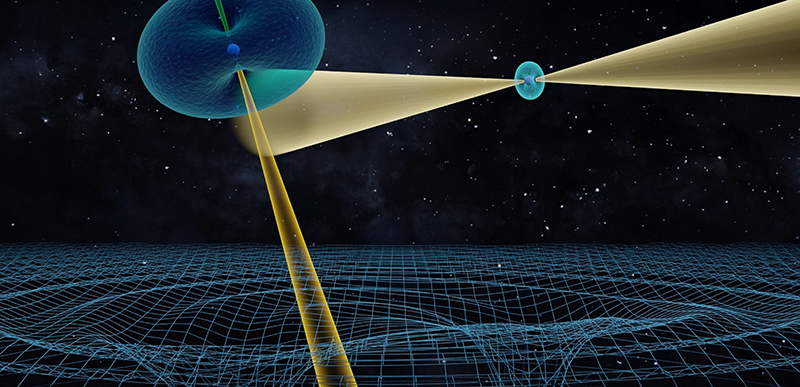
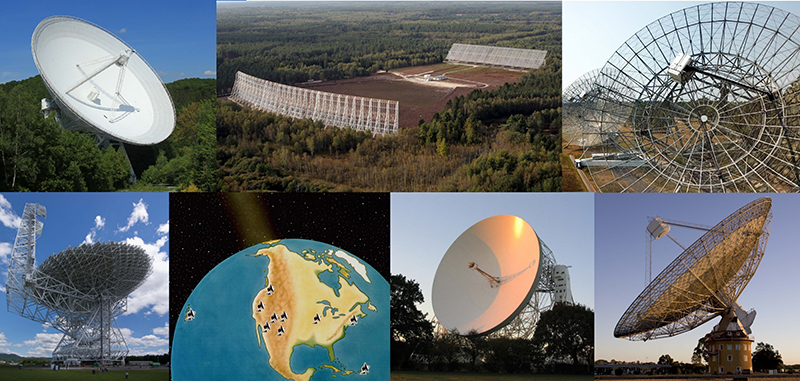
- 2In this case, their mass is 30% greater than that of the Sun, with a diameter measuring only 24 km. The two stars orbit one other in just 147 minutes at a velocity of 1 million km/h. As one of them rotates very quickly (44 times per second), it was an ideal candidate for this study.
- 3These gravitational waves carry away part of the energy in the system, which gradually shrinks: gravitational waves are thus detected indirectly by measuring this loss of energy.
Strong-field Gravity Tests with the Double Pulsar, Michael Kramer, Ingrid H. Stairs, Richard N. Manchester, Norbert Wex, Adam Deller, William A. Coles, Masooma Ali, Marta Burgay, Fernando Camilo, Ismaël Cognard, Thibault Damour, Gregory Desvignes, Robert Ferdman, Paulo C. C. Freire, Steffani Grondin, Lucas Guillemot, George B. Hobbs, Gemma Janssen, Ramesh Karuppusamy, Duncan R. Lorimer, Andrew G. Lyne, James W. McKee, Maura McLaughlin, L. Elias Münch, Nihan Pol, Andrea Possenti, John Sarkissian, Ben W. Stappers and Gilles Theureau. Physical Review X, 13 December 2021. DOI: 10.1103/PhysRevX.11.041050
